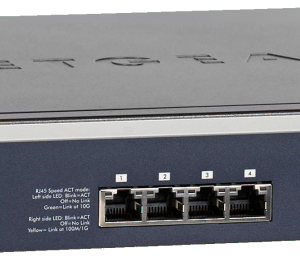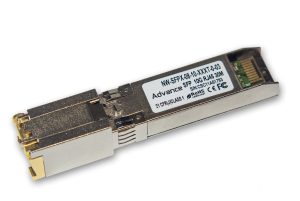10Gigabit networking has, until recently, been regarded as the de-facto standard for top of rack and datacentre applications. The arrival of the QSFP+ and QSFP28 formats enabling 40G and 100G in relatively low cost packages has driven those types of networks to upgrade at astounding pace, and the 10G SFP+ format has trickled down to common on-premise networks, such as offices, manufacturing plants and public service buildings.
Vendors have been quick to jump on the 10G bandwagon and offer a whole host of products with 10G Ethernet enabled right out of the box, including routers and firewalls, network storage devices, wireless controllers and more. Most of these devices enabled 10G buy including an SFP+ port on the device which allowed users to plug in a multimode or singlemode fibre optic SFP+ module and hook the device up to their optical network.
 It soon became evident that not all customers have an optical network, or at least couldn’t justify the use (and cost) of optical transceivers and fibre cables when the distance between devices was relatively short – in many cases, less than a meter! Many vendors therefore have started to build in 10G copper ports (10GBase-T) into their devices, which allows for full 10Gigabit Ethernet networking over standard Cat6a/7 patch cables. There has been some success stories of using Cat5e and Cat6 cables on very short distances too, although this is not recommended.
It soon became evident that not all customers have an optical network, or at least couldn’t justify the use (and cost) of optical transceivers and fibre cables when the distance between devices was relatively short – in many cases, less than a meter! Many vendors therefore have started to build in 10G copper ports (10GBase-T) into their devices, which allows for full 10Gigabit Ethernet networking over standard Cat6a/7 patch cables. There has been some success stories of using Cat5e and Cat6 cables on very short distances too, although this is not recommended.
Everything discussed here so far is based on a ratified standard – SFP+ modules, RJ-45 ports, 10G Ethernet all have ratified IEEE standards so a user can reasonably expect to be able to purchase a device, plug in a regular off-the-shelf patch cable and have a working network. There is one application that is becoming increasingly common that has not been addressed though, and that is a switch with SFP+ ports and a device such as a NAS drive with a 10G copper port. How do we connect a copper to a fibre port?
In the past that question was simple, you use a media converter. But 10G media converters are generally quite expensive and not so easy to come by – Advance are one of only a handful of suppliers that actually stocks them. It also means adding another device to the network, another power supply to manage and potentially another point of failure. What we need is a 10G version of the more common Gigabit copper SFP modules, but there is no real push from any vendor or standards body to come up with a solution.
 Advance therefore have closed this gap with our own specially developed 10G RJ-45 SFP+ module. This module allows for 10G Ethernet operation using standard copper patch leads in a 10G SFP+ slot. Developed to be compliant with IEEE standards covering data transmission (802.3) and the multi-source agreement (MSA) standards for SFP+ modules (SFF-8431 and SFF-8432), the module is compatible with virtually all SFP+ equiped devices.
Advance therefore have closed this gap with our own specially developed 10G RJ-45 SFP+ module. This module allows for 10G Ethernet operation using standard copper patch leads in a 10G SFP+ slot. Developed to be compliant with IEEE standards covering data transmission (802.3) and the multi-source agreement (MSA) standards for SFP+ modules (SFF-8431 and SFF-8432), the module is compatible with virtually all SFP+ equiped devices.
The module is capable of driving 10G Ethernet up to 30m over Cat6a/7 cabling, a feat which does require an increased amount of power compared to optical 10G SFP+ modules, typically 2.5W. As a result it is recommended to only populate every other SFP+ port in a device to avoid over-voltage incidents and allow for better heat dissipation. Our advanced EMI cancellation algorithm features fast retrain technology for real-time noise suppression that ensures high speed data throughput with optimised signal processing in challenging environments.
As the majority of mainline vendors have yet to offer products of their own to fulfil this requirement, there is generally no part to make our module compatible with. As a result Advance encode our 10G RJ-45 SFP+ modules to present themselves to the host device with a valid part code identifier to allow the host device to communicate with the module and ensure its operation. Advance test all our modules in our UK facility on real vendor hardware to ensure correct operation and provide all our customers with our guarantee of compatibility.
You can download the Advance 10G RJ-45 SFP+ module specification sheet, and please contact us to discuss your precise requirements here.
